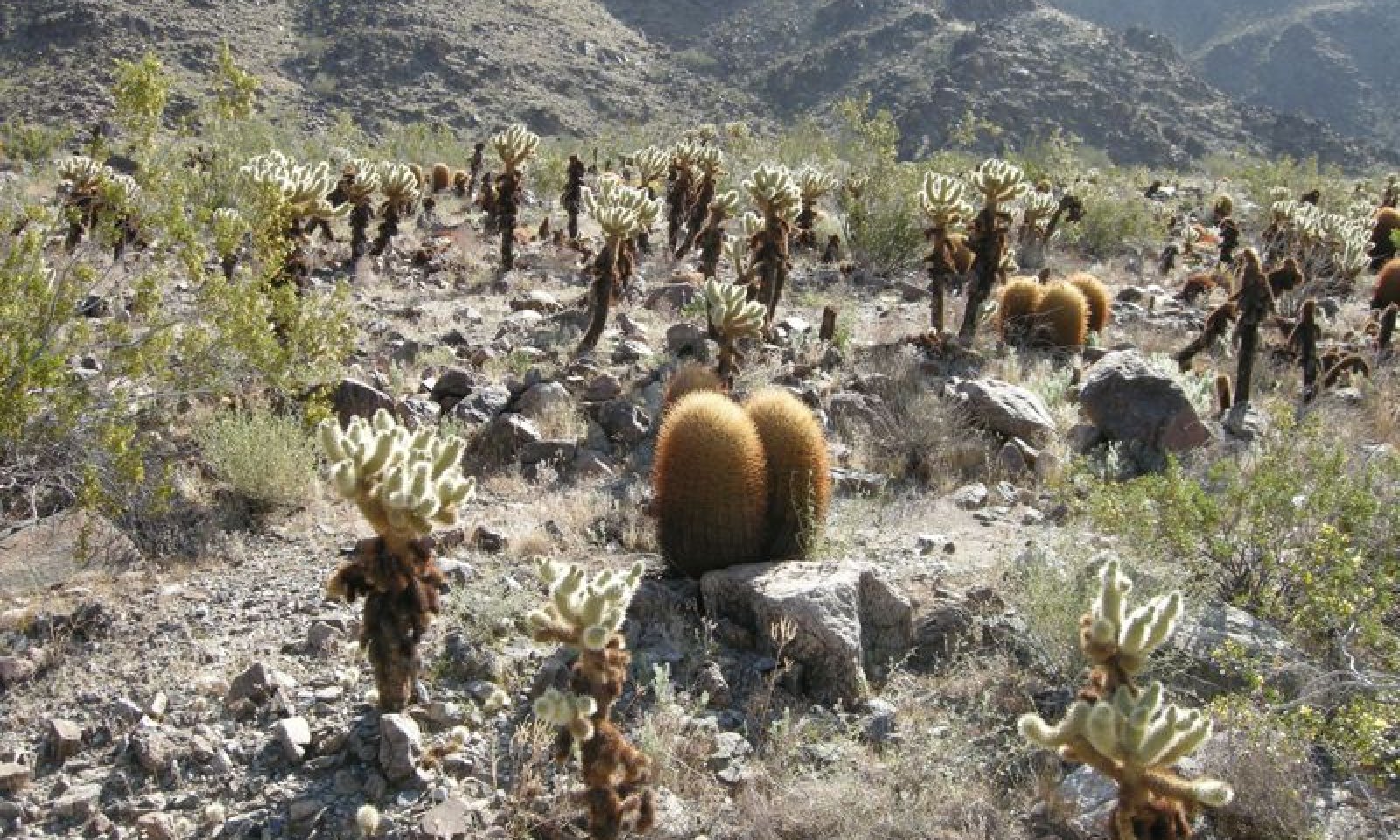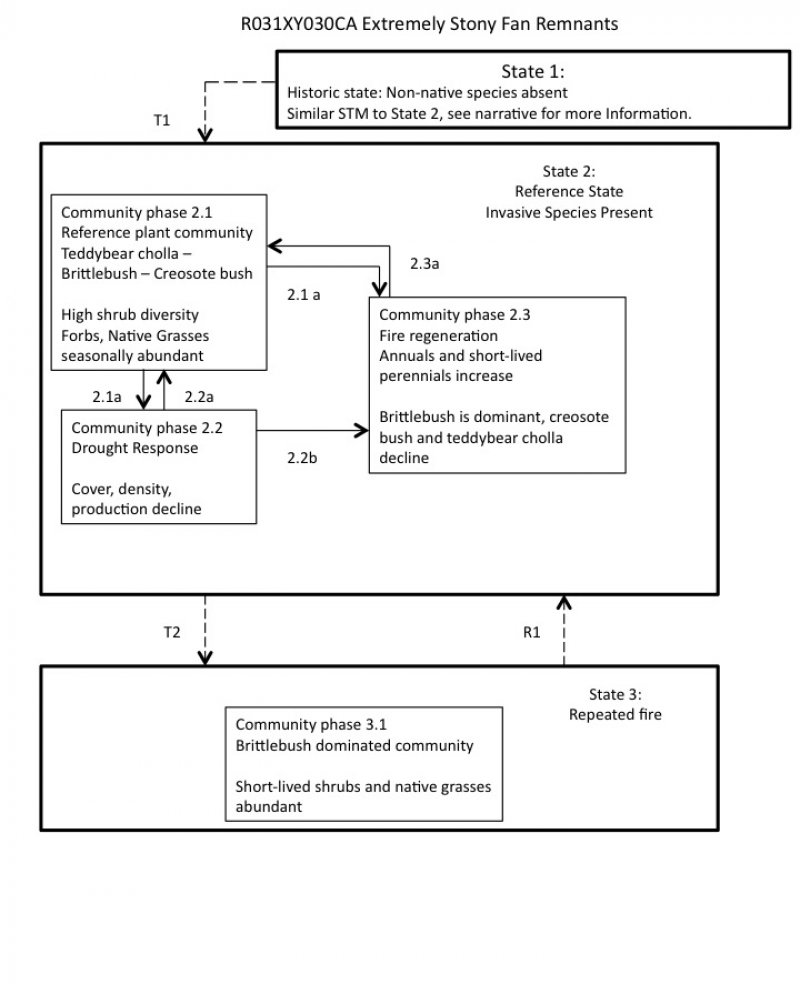

Natural Resources
Conservation Service
Ecological site R040XD030CA
Extremely Stony Fan Remnants
Last updated: 3/11/2025
Accessed: 04/29/2025
General information
Provisional. A provisional ecological site description has undergone quality control and quality assurance review. It contains a working state and transition model and enough information to identify the ecological site.
Figure 1. Mapped extent
Areas shown in blue indicate the maximum mapped extent of this ecological site. Other ecological sites likely occur within the highlighted areas. It is also possible for this ecological site to occur outside of highlighted areas if detailed soil survey has not been completed or recently updated.
MLRA notes
Major Land Resource Area (MLRA): 040X–Sonoran Basin and Range
MLRA Description:
Major land resource area (MLRA) 31 is the Lower Colorado Desert. This area is in the extreme southeastern part of California, in areas along the Colorado River, and in Western Arizona. The area is comprised of rough, barren, steep, and strongly dissected mountain ranges, generally northwest to southwest trending that are separated by intermontane basins. Elevation ranges from approximately 275 feet below sea level at the lowest point in the Salton Trough to 2700 feet along low northwest to southeast trending mountain ranges. The average annual precipitation is 2 to 6 inches with high temporal and spatial variability. Winter temperatures are mild, summer temperatures are hot, and seasonal and diurnal temperature fluctuations are large. Monthly minimum temperature averages range from 40 to 80 degrees F (4 to 27 degrees C). Monthly maximum temperature averages range from 65 to 110 degrees F (18 to 43 degrees C) (WRCC 2002). Temperatures are rarely below 28 degrees F, and extremely rarely fall below 24 degrees F. Precipitation is bimodal, with approximately 20 to 40 percent of annual precipitation falling between July and September. This summer rainfall, in combination with very hot temperatures and very few to no days of hard freeze are what characterize this MLRA and distinguish it from the Mojave Desert (MLRA 30).
Ecological site concept
This ecological site occurs on extremely cobbly and stony alluvial fans and fan remnants that are located near the base of mountain slopes at elevations of 1230 to 2620 feet. Soils are typically very deep gravelly sand, with a high cover of surface gravels and cobbles, and a high subsurface rock fragment volume.
Production reference value (RV) is 290 pounds per acre and depending on precipitation and annual forb production, ranges from 150 to 455 pounds per are. Dense teddybear cholla (Cylindropuntia bigelovii) colonies are characteristic of this ecological site, and brittlebush (Encelia farinosa) and creosote bush (Larrea tridentata) are the dominant species. Shrub cover and diversity are relatively high. Run-on from nearby mountain slopes and from the large rock fragments that dominate the soil surface disperse teddybear cholla propagules, which maintains cholla colonies. Additional run-on and a heterogeneous soil surface also provide microsites that support high shrub diversity and cover relative to adjacent landforms. Deep, coarse soils and hyperthermic soil temperatures favor dominance by the deep-rooted creosote bush, while additional run-on and a very arid climate supports dominance by brittlebush.
Data ranges in the physiographic data, climate data, water features, and soil data sections of this Ecological Site Description are based on major components only (15 percent of map unit or greater).
Associated sites
| R040XD034CA |
Gravelly, Braided, Ephemeral Stream R031XY034CA is found on adjacent third order or larger ephemeral drainageways. A complex of plant communities is present, and desert lavender (Hyptis emoryi), burrobush (Hymenoclea salsola), smoketree (Psorothamnus spinosus), and desert ironwood (Olneya tesota) are important species. |
|---|---|
| R040XD001CA |
Limy Hill 4-6" p.z. R031XY009CA is found on adjacent steep alluvial fans. Burrobush (Ambrosia dumosa) and creosote bush (Larrea tridentata) are dominant. |
| R040XD009CA |
Gravelly Fan Remnants And Fan Aprons R031XY009CA is found on adjacent terraces. Creosote bush (Larrea tridentata) and Schott's dalea (Psorothamnus schottii) are dominant. |
| R040XD200CA |
Rarely Flooded Fans R031XY200CA is found on adjacent alluvial fans and fan aprons. Brittlebush (Encelia farinosa) and creosote bush (Larrea tridentata) are co-dominant. |
Similar sites
| R040XD200CA |
Rarely Flooded Fans R031XY200CA occurs on rarely flooded fans and fan aprons, and is not necessarily located near to mountain bases. Teddybear cholla (Cylindropuntia bigelovii) colonies are not present. |
|---|---|
| R040XD009CA |
Gravelly Fan Remnants And Fan Aprons R031XY009CA occurs on similar soils, but is found on broader, flatter remnants located further from mountain bases and receiving less additional run-on. Teddybear cholla (Cylindropuntia bigelovii) colonies are not present, and creosote bush (Larrea tridentata) and Schott's dalea (Psorothamnus schottii) are co-dominant. Vegetation is much less productive and less diverse. |
Table 1. Dominant plant species
| Tree |
Not specified |
|---|---|
| Shrub |
(1) Cylindropuntia bigelovii |
| Herbaceous |
Not specified |
Click on box and path labels to scroll to the respective text.

